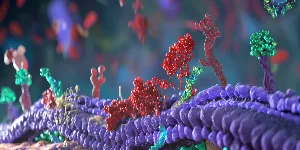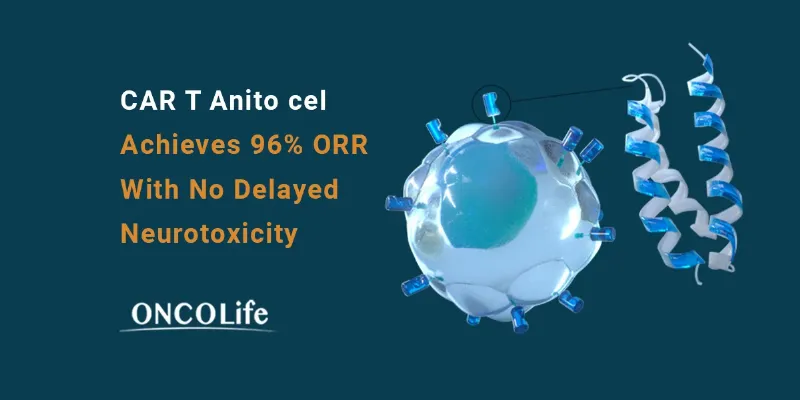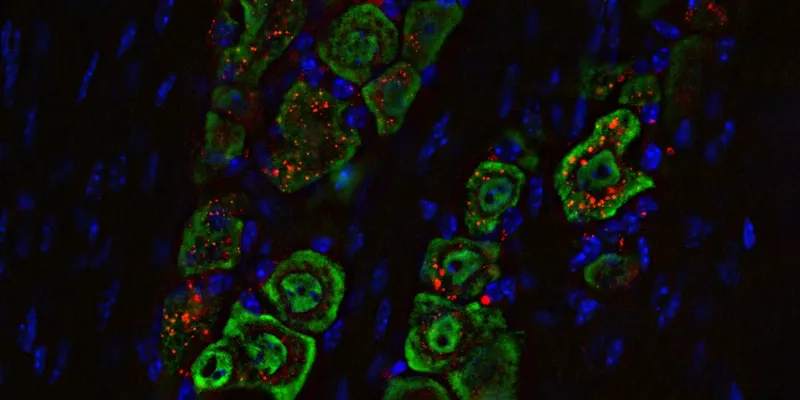New Study Uncovers Hidden Disease in 42% of Ovarian Cancer Patients in Remission


ONCOLife |
2 August 2025
A multi-institutional study found that 42% of ovarian cancer patients in clinical remission still harbored minimal residual disease (MRD), undetectable by scans. MRD was linked to significantly worse survival outcomes—PFS dropped from 23.8 to 7.4 months. SLL and ctDNA testing revealed hidden cancer, identified druggable targets, and supported personalized therapy.
For decades, advanced ovarian cancer has defied modern medicine’s best efforts. Even after successful surgery and chemotherapy, most patients relapse. The reason has long remained elusive—until now. A groundbreaking study, published in Clinical Cancer Research, uncovers a startling truth: nearly half of patients thought to be in remission actually harbor residual cancer too small to be detected by standard imaging.
This study, led by Break Through Cancer’s “Targeting Minimal Residual Disease (MRD) in Ovarian Cancer TeamLab,” pulls back the curtain on this hidden disease and offers an entirely new way to detect, understand, and potentially treat it.
"This work shows that what we see on a scan doesn't always tell the whole story," said Dr. Amir Jazaeri, co-senior author and Professor of Gynecologic Oncology at MD Anderson. "With SLL, we've been able to uncover disease that was otherwise invisible, and more importantly, study how to target it."
A Silent Persistence: MRD After “Remission”
The team studied 95 patients with high-grade epithelial ovarian cancer who showed no visible signs of cancer after standard frontline therapy. While conventional imaging suggested remission, a more invasive technique—second-look laparoscopy (SLL)—told a different story: 42% still had microscopic disease, undetectable by scans.
These lingering tumor cells, classified as minimal residual disease (MRD), were far from harmless. Patients with MRD had dramatically worse outcomes: a median progression-free survival (PFS) of 7.4 months compared to 23.8 months in MRD-negative patients. Overall survival followed the same pattern—33.9 months versus not reached. In statistical terms, SLL positivity was a strong and independent predictor of worse outcomes, with a hazard ratio for death of 4.40.
Blood as a Window: ctDNA Testing
For a less invasive option, researchers explored circulating tumor DNA (ctDNA)—minute fragments of tumor-derived DNA that float in the bloodstream. Among 44 patients who underwent both SLL and ctDNA testing, one-third tested positive for ctDNA. Much like SLL, ctDNA positivity was strongly correlated with recurrence and poorer survival. Patients with ctDNA in their blood had a median PFS of 6.4 months, compared to 28.1 months for ctDNA-negative patients. Median overall survival was also markedly lower: 32.4 months vs. not reached.
"Using MRD offers two key advantages over current approaches for advanced ovarian cancer," said Dr Jazaeri. “First, it can show early whether a treatment is working, allowing for quicker, smaller trials and faster access to new therapies. Second, by studying MRD's biology, we can uncover ovarian cancer's weaknesses and develop more effective, potentially curative treatments.”
Cracking the Biology of MRD
Detecting MRD is just the beginning. The research team, drawing expertise from MIT, Dana-Farber, Johns Hopkins, Memorial Sloan Kettering, and MD Anderson, went a step further by probing the molecular landscape of these residual cancer cells using spatial transcriptomics (GeoMx and Visium) and multiplex proteomics (CODEX). The result? A molecular atlas of what makes MRD cells tick—and survive.
MRD samples showed signs of:
- Hypoxia signaling (a known driver of aggressive tumor behavior)
- Immune exclusion, suggesting that immune cells are actively kept out of these regions
- Epithelial-to-mesenchymal transition (EMT), linked to drug resistance and metastasis
Importantly, the team identified druggable targets like CDK6, MSLN, ERBB2, and GLS—laying the foundation for future MRD-specific therapies.
MRD as a New Clinical Marker
In perhaps the most transformative aspect of the study, the researchers propose using MRD—rather than radiographic progression—as a new clinical trial endpoint. Why does this matter? In traditional oncology trials, waiting for visible recurrence can take months or years. MRD offers a faster, more sensitive way to evaluate treatment response, enabling shorter and more targeted trials.
"This is exactly the kind of collaborative, ambitious science Break Through Cancer exists to accelerate," said Tyler Jacks, PhD, President of Break Through Cancer. "These findings don't just answer long-standing questions; they open the door to smarter trials, understanding where recurrence comes from and blocking it from occurring."











Comments
No Comments Yet!